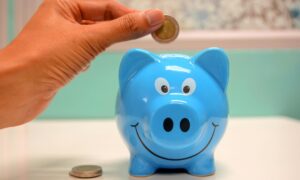Forex trading is the activity of purchasing and selling currencies to earn. The FX market is the world’s largest financial market, with billions of dollars moved each day. Forex traders seek to benefit from variations in the exchange values of various currencies. Forex traders can use a variety of tools and strategies to analyze the market and make trading decisions.
These may include technical analysis, which involves using charts and indicators to identify patterns and trends in the market, and fundamental analysis, which involves analyzing economic data and news to determine the overall health of a particular currency. Forex trading is often done through a broker, who offers clients a forex trading platform and market access. Orders such as market orders, limit orders, and stop-loss orders can be used by traders to conduct trades.
How does forex trading works
Forex trading is purchasing and selling various currencies on the worldwide foreign exchange market. The price at which the deal is performed is determined by the exchange rate between the two currencies. A lot of variables influence the exchange rate, including economic news, political events, and market emotion.
Currencies:
Forex trading entails the purchase and sale of various currencies. Currency pairings, such as the US dollar and the Euro (USD/EUR) or the Japanese yen and the British pound (JPY/GBP), are always exchanged.
Bid and Ask Prices:
Each currency pair has two prices: the bid price and the asking price. The bid price is the price at which you can sell the base currency (the first currency in the pair), while the asking price is the price at which you can buy the base currency.
Spread:
The gap is the price discrepancy between the ask and the bid. This is how brokers profit from FX trading. Brokers typically charge a fee or a portion of the spread.
Trading Platform:
Forex trading is usually conducted through a trading platform provided by a broker. The trading platform allows traders to place trades and manage their accounts.
Orders:
Traders can place different types of orders, including market orders, limit orders, and stop-loss orders. In the event that the market goes against a trader’s position, stop-loss bets are used to limit losses.
Analysis:
Forex traders evaluate the market and make trading choices using a variety of tools and tactics. Technical analysis, which includes utilizing charts and indicators to discover market patterns and trends, and fundamental analysis, which involves evaluating economic data and news to evaluate the overall health of a given currency, are two examples.
Why trade forex
- With billions of dollars changing hands every day, the FX market is the greatest financial market in the whole globe. As a result, traders may easily and rapidly join and exit deals since there’s constantly a buyer and a seller for any currency pair.
- Forex trading allows traders to use leverage, which means that they can control a large position with a small amount of capital. This can potentially increase profits but also increase risk.
- The forex market is open 24 hours a day, five days a week, which means that traders can trade at any time, including outside of traditional business hours.
- Forex trading usually involves low transaction costs, as brokers typically charge a commission or take a percentage of the spread.
- Forex trading offers the potential for significant profits, especially for traders who are disciplined and have a solid trading strategy.
Key forex trading terms
Following are some of the key terms that are commonly used in forex trading:
Pip:
A pip (or percentage in point) is the lowest unit of measurement in the forex market, representing the smallest price fluctuation that a currency may experience. A pip is equivalent to 0.0001 for the majority of currency pairings.
Bid/Ask Price:
Each currency pair has two prices: the bid price and the asking price. The bid price is the price at which you can sell the base currency, while the asking price is the price at which you can buy the base currency.
Margin:
The sum of money a trader must spend with their broker in order to start a position is known as margin. Based on the broker and the currency pair being traded, different margin requirements apply.
Leverage:
Leverage is the amount of borrowed funds that a trader can use to open a larger position than their account balance would allow.
Margin Call:
When a trader’s checking account goes below the required margin level, the broker needs the trader to deposit extra cash in order to keep the position open.



































